Who does not know them, the unsightly holes in the garden. But which animal was up to mischief here? We introduce the most popular garden visitors.
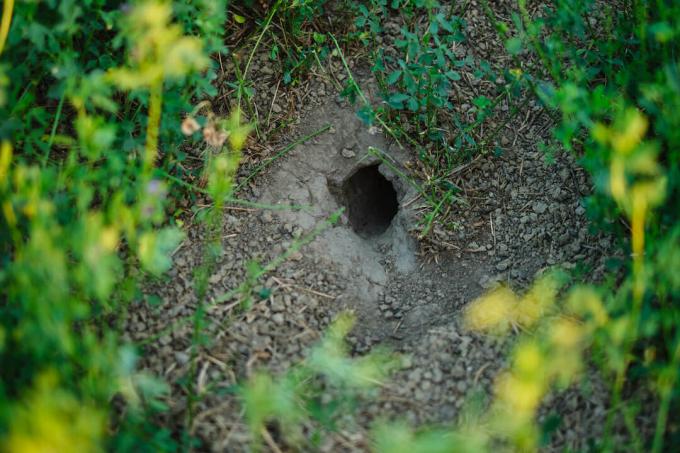
The gaps in the lawn do not always come from animals. However, these often contribute to bald spots through cave-building or foraging. Here you can find out how you can recognize and drive away the culprit.
contents
- How can you tell which animals are digging holes in the garden?
-
Which animal digs holes in the garden?
- Rat holes in the garden
- Mouse holes in the garden
- Raccoons made holes in the garden
- Hedgehog holes in the garden
- Earth wasp holes in the garden
- Holes in the ground by birds
- Holes in the ground from mole crickets
- Holes in the garden from other animals
How can you tell which animals are digging holes in the garden?
Holes in the garden can have a variety of causes. On the one hand, they can arise from animals digging into the ground. On the other hand, animal eating activities also cause holes in the lawn. In order to recognize who or what is responsible for the holes, one should first consider whether the holes have developed over a long period of time or whether they have appeared very suddenly. The latter mostly speaks for animals living in the ground or looking for food. The size, depth and frequency of the holes can be an indication of which animal it is. Last but not least, the area around the hole has to be considered. Pay attention to whether there are heaps of earth or which traces of excrement can be seen. Ideally, you should simply observe the holes over a long period of time or set up a photo trap to identify the culprit.
Which animal digs holes in the garden?
By carefully inspecting and observing the holes, one can find out what animal it is and then take appropriate countermeasures.
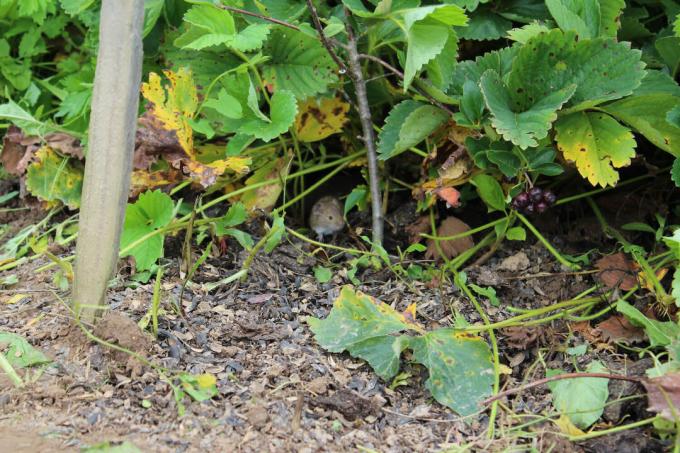
Rat holes in the garden
You can recognize holes in the lawn by rats by their size and location. Rats dig holes 8 to 20 cm in diameter that are larger than mice. The holes are often in the compost or under stone slabs and tree stumps or trunks. These lead vertically into the ground. Rats also leave spindle-shaped, shiny feces behind. In the event of a rat infestation or suspicion of it, you should report to the regulatory office. Cloths soaked in turpentine that you lay out in the garden are suitable for driving away. In addition, hot spices such as pepper or chilli powder can be used on walkways or in front of the holes. Used cat litter can also help drive them away.
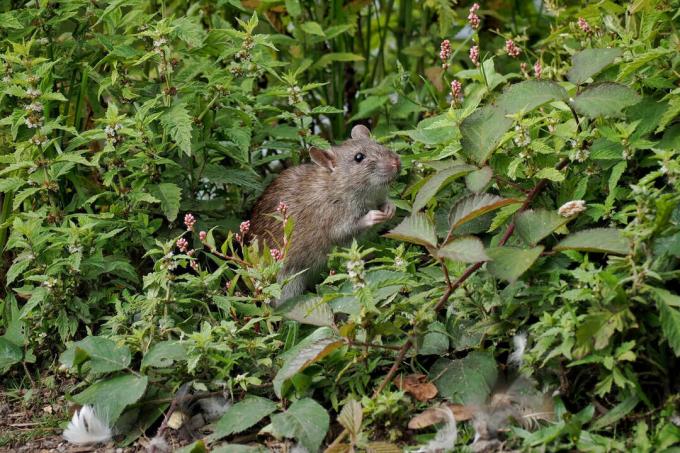
This is how you can recognize rat holes in the garden:
- Round opening (8-20 cm tall)
- No pile of earth
- Rats can often be seen wandering around at dusk
Mouse holes in the garden
Mouse holes in the garden are not uncommon. It can be caused by shrews or voles, and sometimes field mice. In contrast to the shrew and field mouse, the holes of the vole are usually provided with a pile of earth next to them. These are in contrast to the larger and more rounded hills of the Mole rather small and flat. The feces of mice look very similar to that of rats, but are smaller. While shrews are welcome guests in the garden because they eat pests, voles can cause great damage. As a rule, field mice do not have to be fought unless they occur in large numbers.
The corridors of the mice run flat under the surface of the earth. The roots of fruit trees or vegetables are eaten off to just below the surface of the soil, which leads to poor growth. Here, too, you can rely on fragrances for expulsion. Mice, for example, do not like to smell garlic at all. But the above-mentioned rat remedies also help against a mouse infestation. If the evictions do not work, there are other options Control of voles.
Attention: Some species of shrew are specially protected and must not be killed.
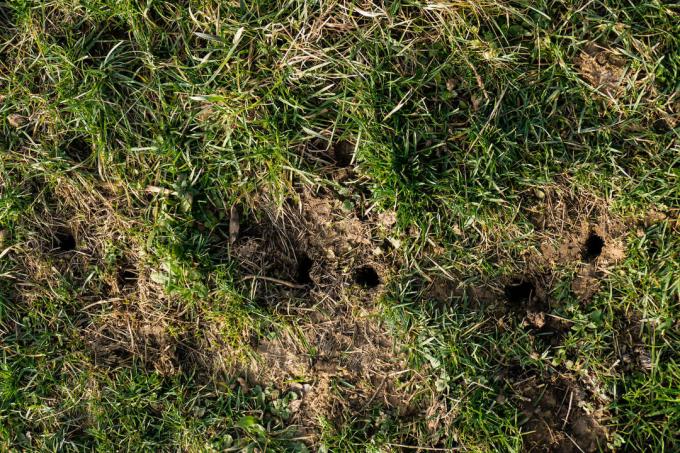
This is how you can recognize mouse holes in the garden:
- Oval opening with a corridor behind it
- Shrews and field mice: About 2 - 5 cm tall
- Voles: With a flat pile of earth
Tip - close the holes in the lawn again: Although some holes in the earth also indicate visitors who are useful and eat pests, the lawn should then look uniform again afterwards. Once the polluters have been evicted, you can whip up your lawn. To close the gaps, for example, ours is available Plantura lawn repair at. The high-quality mixture consists of lawn seeds from various grasses, organic lawn fertilizers, growing media and lime so that the lawn can grow quickly and densely. Loosen the soil in the gaps and remove weeds if necessary. Apply the Plantura Lawn Repair to the area and keep the soil moist. This creates a seamless, lush green lawn again in no time at all.
Raccoons made holes in the garden
The raccoon does not dig real holes or even underground passages, but rather digs up the ground in search of food. Therefore, scratch marks can often be found around the depression in the lawn. If the raccoon stays in your garden for a long time, you should definitely make possible sources of food such as garbage cans or windfalls inaccessible to him.
This is how you can recognize raccoon holes in the garden:
- Troubled depression
- Very superficial
- Scratch marks
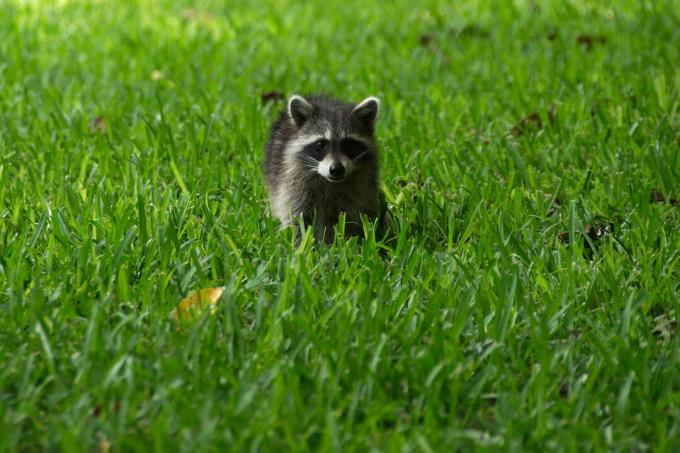
Hedgehog holes in the garden
Hedgehogs make holes in the lawn while foraging for food. The hedgehog searches for food in the ground and in doing so stirs up the earth, which can create funnel-shaped holes in the garden. It is mostly a one-time affair. There are also some pests on the hedgehog's menu. Flat depressions and small holes remain, which can, however, simply be filled in by sowing the lawn.
This is how you can recognize hedgehog holes in the garden:
- Funnel-shaped
- More like a recess than a hole (about 2 cm in size)
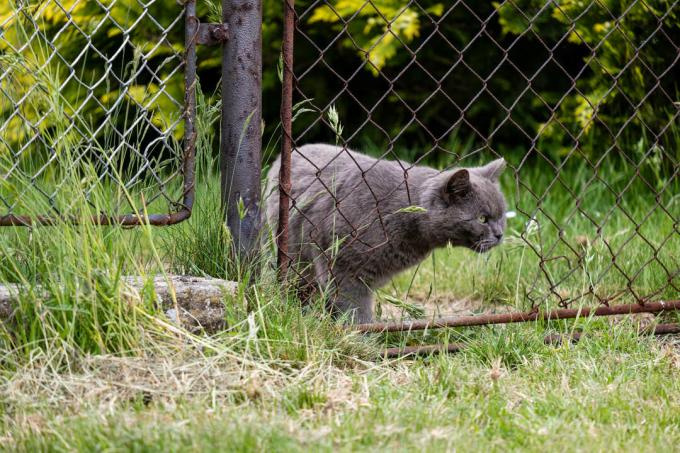
Earth wasp holes in the garden
Earth wasps leave holes about 1 cm in diameter in the lawn. These are usually not particularly annoying, but can be dangerous if you enter the garden barefoot. The best way to fight earth wasps is to seek help from a professional. Some earth wasps are even protected. In autumn you can close the earth wasp hole to prevent it from moving in the next year.
This is how you can recognize earth wasp holes in the garden:
- Round opening (approx. 1 cm tall)
- Much visited
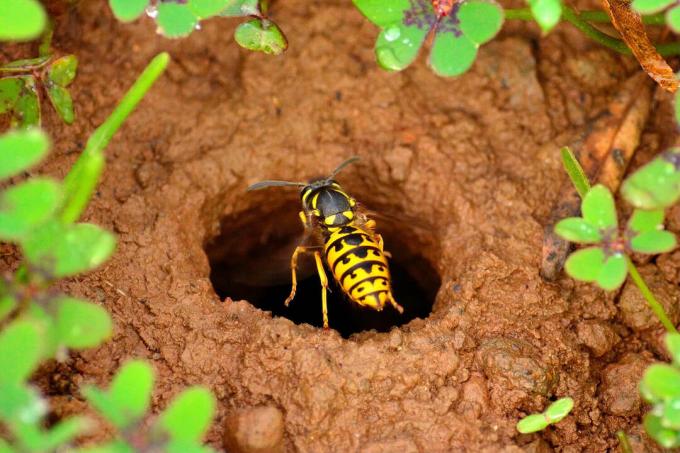
Holes in the ground by birds
Birds can also leave holes in the ground in the garden. These are usually around 2 cm in size and, as with the hedgehog, arise from foraging for food. If you hang up bird feeders, you can lure the birds away from the lawn.
This is how you can recognize bird holes in the garden:
- About 2 inches tall
- Spread over a large area
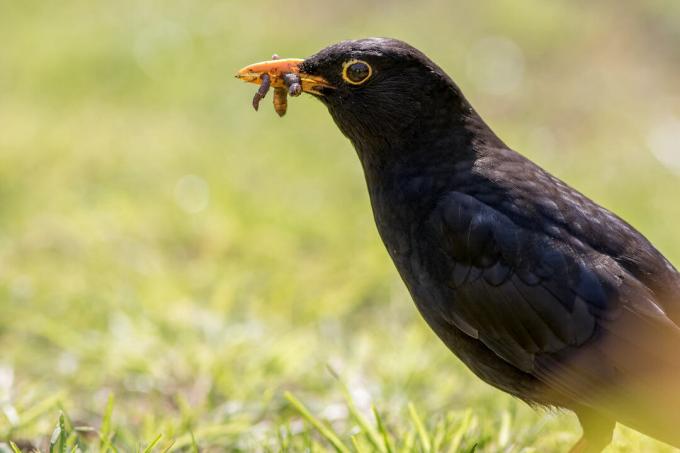
Tip: Birds especially like to dig in the lawn if there are grubs or groundworms underneath. If they cause a lot of damage in the garden, groundworms and white grubs can be controlled. You can find out how this works successfully in our articles Groundworms and to White grubs in the lawn.
Holes in the ground from mole crickets
If there are several small, round holes in the lawn or bed that are smaller than 1 cm, this could be the Mole cricket Act. Fist-sized, bald spots usually appear next to the holes. The nests are located underground here. The roots of the grasses are eaten away by the insects and die above ground. If there is no major infestation, mole crickets do not cause particularly great damage and do not need to be fought. They also eat pests, so they are quite useful. Unfortunately, mole crickets are becoming increasingly rare, especially in northern Germany.
This is how you can recognize mole cricket holes:
- Less than 1 cm
- Bare patches in the lawn
- Eroded roots in the bed
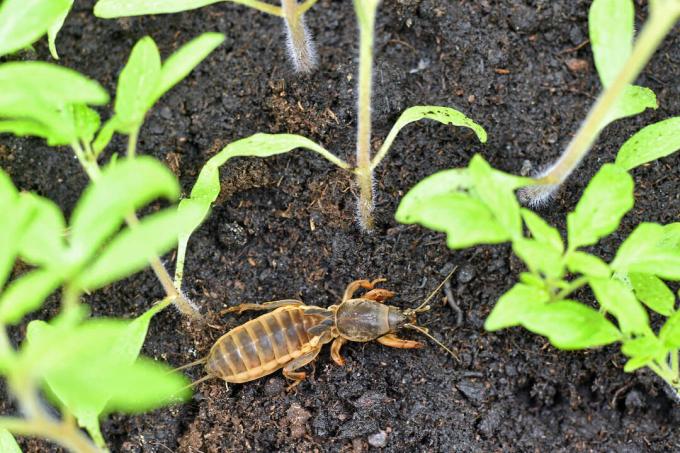
Holes in the garden from other animals
There are a few other animals that can cause holes in the garden. Most of the time, however, the visitors disappear on their own or do not cause too much damage. Many animals are sensitive to smells, light or noise and can thus be driven away.
- Fox: Several large holes in the ground can be the entrances to a burrow or serve as hiding places for prey or food.
- Rabbits: Every now and then a wild rabbit can get lost in the garden and leave bigger holes.
- Ant lions: The little larvae of the ant damsel, a pretty dragonfly, dig small funnels in sandy soil to catch prey.
- Cats: Even house cats sometimes dig holes in the ground and bury their droppings there. With the help of suitable Cat frightening methods you can easily drive away the four-legged friends.
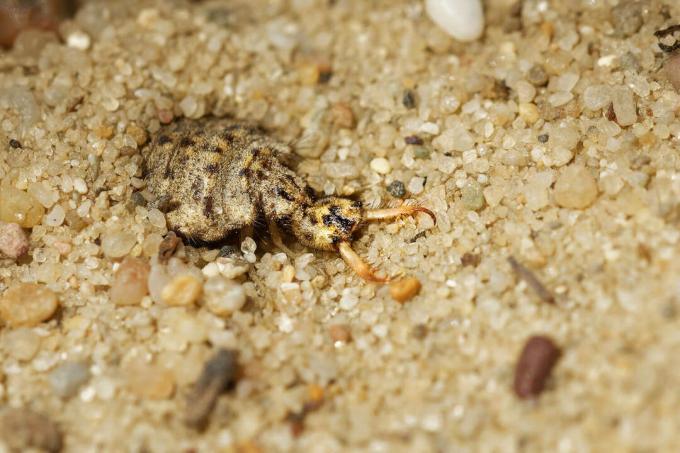
Lawn damage can occur not only through animals, but also through incorrect care or drought. Here's how to use your Mending and repairing the lawn.
